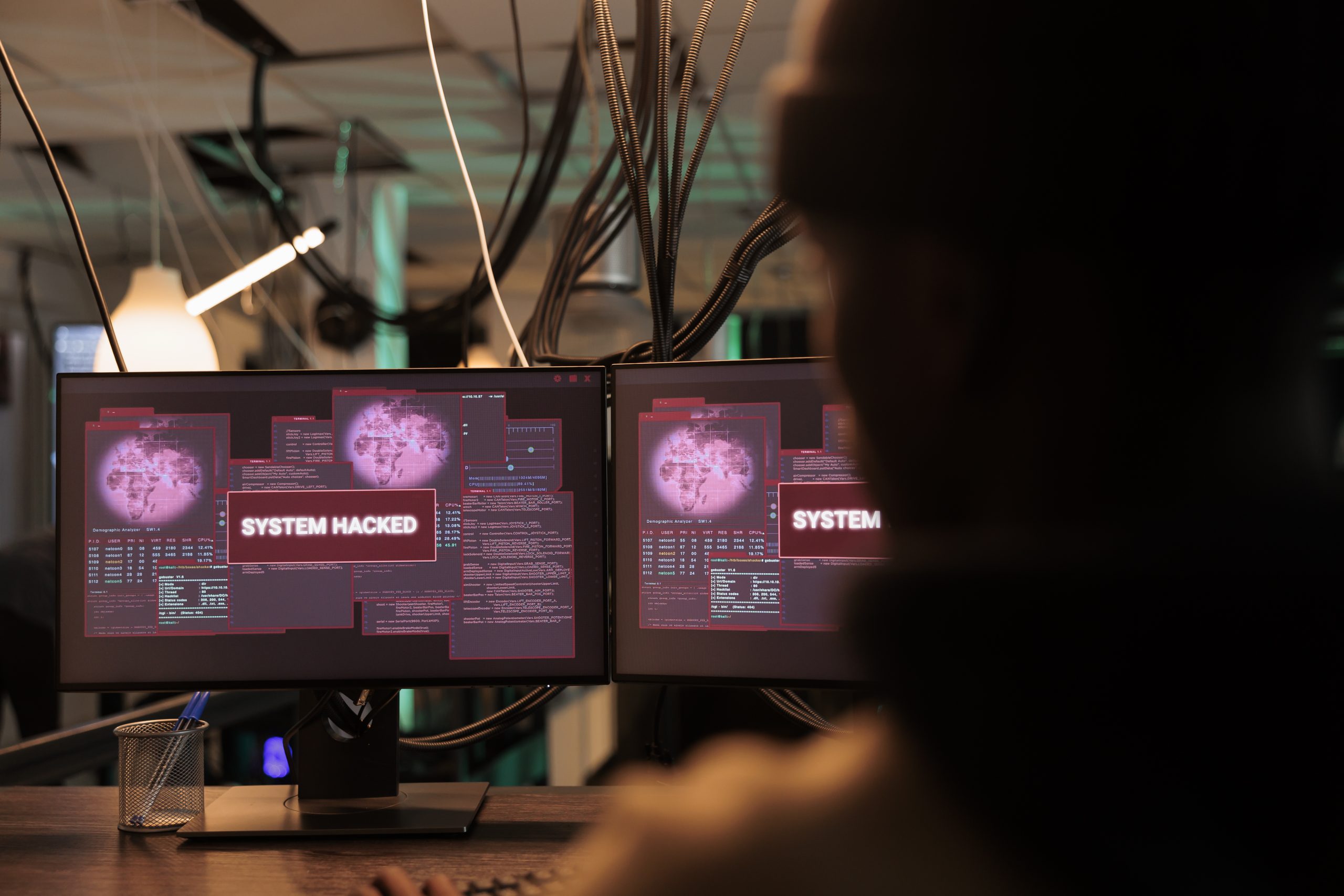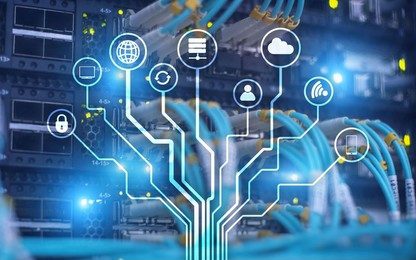
Understanding how to prevent cyberattacks is not only about data protection. It’s also about keeping our critical infrastructure safe, protecting individual privacy and safety, and maintaining trust in our wireless networks and systems.
In the first quarter of 2022, around 93 victims reported losses of over $56.2 million due to Business Email Compromise (BEC) scams in Singapore.
This was further exemplified in the year when a Singapore-based precision engineering company with over 1,000 employees suffered a ransomware attack. In this incident, the company’s systems and critical data were encrypted, and the attackers demanded a ransom of 200 bitcoins, roughly equivalent to $7 million, for data release.
Cyberattacks, ranging from data breaches to identity theft and from ransomware to phishing scams, represent the different types of cybercrimes faced by organisations. As technology advances, so do the tactics of cybercriminals. Therefore, everyone should stay informed and vigilant in their cybersecurity practices.
The good news is that, with the right knowledge and tools, it’s possible to prevent cyberattacks.
By the end of this article, you’ll learn how to prevent cyberattacks and establish a strong defence.
10 Effective Ways To Prevent Cyberattacks
These strategies can help strengthen your cybersecurity defences and outsmart the advanced tactics used by cybercriminals.
1. Secure Network Infrastructure

A digital illustration overlaying a network server panel with various connectivity and security icons to defend against network attacks.
A secure network infrastructure is the backbone of any cyber defence strategy. This approach lies in creating a network that is efficient and resilient against cyberattacks.
Building a network infrastructure begins with the implementation of advanced network security protocols. This includes the deployment of firewalls, Intrusion Detection Systems (IDS), and Intrusion Prevention Systems (IPS). These systems detect and block potential threats before they infiltrate the network.
Another aspect is the use of Virtual Private Networks (VPNs). VPNs encrypt internet traffic, ensuring that data transferred over the network remains private and secure, especially in remote work settings.
2. How Firewalls and Antivirus Software Keep You Safe
Firewalls function as gatekeepers to monitor and control incoming and outgoing network traffic based on predetermined security rules. They create a barrier between trusted internal networks and untrusted external networks, such as the Internet, thereby preventing unauthorised access and potential attacks.
Antivirus software, on the other hand, detects, prevents, and removes malicious software. It scans your system for known threats and unusual behaviours and protects your devices from various malware types, like viruses, worms, and ransomware.
3. Enhance Security With Strong Passwords
Strong passwords prevent unauthorised entry and protecting your digital assets from cyber hacking.
A strong password combines letters, numbers, and special characters, making it challenging for attackers to crack. The traditional advice from cybersecurity experts has been to update passwords at least every three months. However, this has changed. The current consensus among many experts, including those from the National Institute of Standards and Technology, is that frequent password changes are unnecessary if each password is strong and unique and two-factor authentication is used.
If there’s a suspected security breach or if malware is found on a device, passwords should be changed immediately.
4. Data Encryption and Protection
Encrypting sensitive information is the process of converting data into a coded format, which makes it unreadable and inaccessible to unauthorised users.
Data encryption works in two ways: at rest and in transit. Encryption at rest secures data stored on devices or in the cloud. Meanwhile, encryption in transit protects data as it travels across networks, such as during Internet communication, email exchanges, or file transfers.
Beyond technical measures, organisations should also adopt data protection policies. This involves classifying sensitive data, controlling access with strict authorisation protocols, and regularly conducting data protection impact assessments.
5. Regular Software Updates and Patch Management

A person using a laptop with a translucent overlay graphic displaying ‘SOFTWARE UPDATE’ and icons suggesting the notion of cyber hacking prevention.
Software updates contain patches for addressing security vulnerabilities identified since the last version of the software was released. If left unpatched, cyberattackers could exploit these weaknesses to steal sensitive personal data or disrupt business operations.
Patch management involves the systematic notification, identification, deployment, installation, and verification of software updates. A well-structured patch management strategy ensures timely updates across an organisation’s systems.
6. Intrusion Detection and Prevention Systems
Intrusion Detection Systems (IDS) monitor network traffic to detect malicious activities and security policy violations. They use predefined security rules and anomaly detection algorithms to analyse traffic and alert administrators about any suspicious behaviour.
While IDS is focused on detection and alerting, Intrusion Prevention Systems (IPS) proactively block or mitigate identified threats. It analyses the nature and source of the threat and then implements measures to prevent malicious activity. These actions may involve blocking traffic from suspicious IP addresses, shutting down compromised network segments, or automatically implementing rules to counteract specific attack patterns.
7. Restrict Unauthorised Access
The first step in restricting unauthorised access is to establish an access control policy. This policy should specify how access to different information and system levels is granted based on a user’s role. This reduces the risk of accidental or intentional misuse of access privileges, whether accidental, intentional, or due to human error.
8. Cybersecurity Awareness Training

A focused individual in a server room using a laptop with virtual security icons, representing engagement in cybersecurity awareness training on how to prevent cyber attacks.
The primary goal of cybersecurity awareness training is to educate employees about the cybercrimes they might encounter, such as phishing, social engineering attacks, ransomware, and malware. It also includes training on the importance of secure password practices, the risks of using unsecured Wi-Fi networks, and the safe handling of sensitive personal information.
9. Cloud Security
Cloud security encompasses a set of policies, controls, procedures, and technologies that collaborate to safeguard cloud-based systems, data, and infrastructure.
While cloud service providers are responsible for securing the infrastructure, organisations must take measures to protect their data within the cloud storage environment. This involves managing user access, implementing data encryption, and guarding against unauthorised data exposure and leaks.
10. Incident Response and Recovery Planning
An Incident Response Plan is your initial defence when a cyberattack happens. It has the immediate steps your organisation must take immediately after detecting a security breach.
A Recovery Plan extends your Incident Response Plan, focusing on restoring normal operations post-cyberattack. It includes strategies for data recovery and repairing compromised systems. There is also a need for post-incident analysis to understand what went wrong and how to prevent similar incidents in the future.
Take the Next Step in Your Cybersecurity Journey
Whether you’re looking to prevent cyberattacks within your organisation, resolve security incidents more effectively, or boost your employability in this growing field, our Cybersecurity Awareness course is the perfect solution.
Enrol today and learn how to secure your digital assets.
Frequently Asked Questions
What causes cyberattacks?
Cyberattacks targeting organisations are frequently motivated by the pursuit of financial gain. Other motives may include making a statement on social or political issues, such as in hacktivism, or engaging in espionage, such as spying on competitors to gain an unfair advantage. These activities fall under the broader umbrella of cyber warfare.
How long do cyberattacks last?
According to IBM, it takes an organisation 197 days to detect a breach and up to 69 days to effectively control it. In contrast, organisations that managed to contain a breach within 30 days saved more than $1 million compared to those that took longer.


